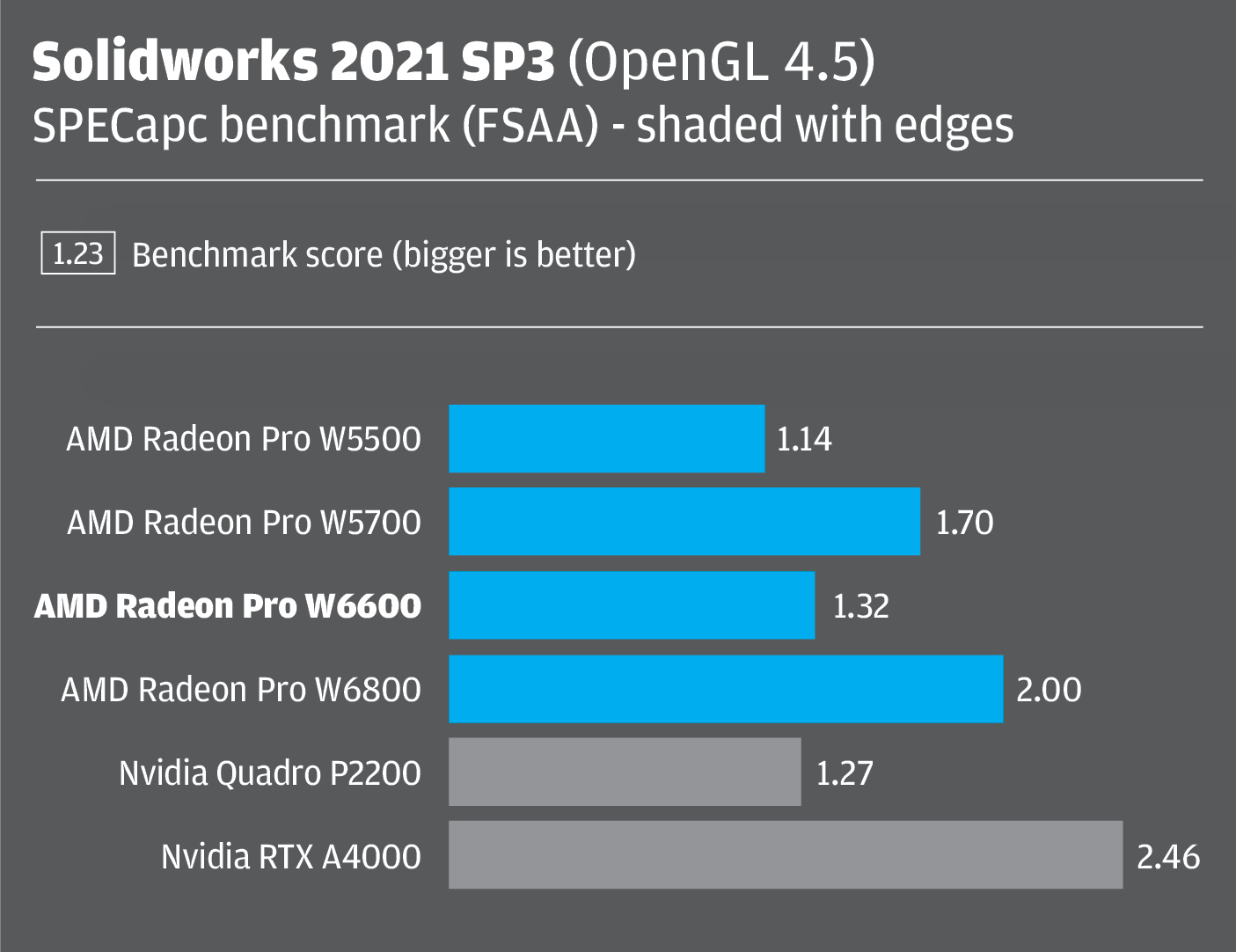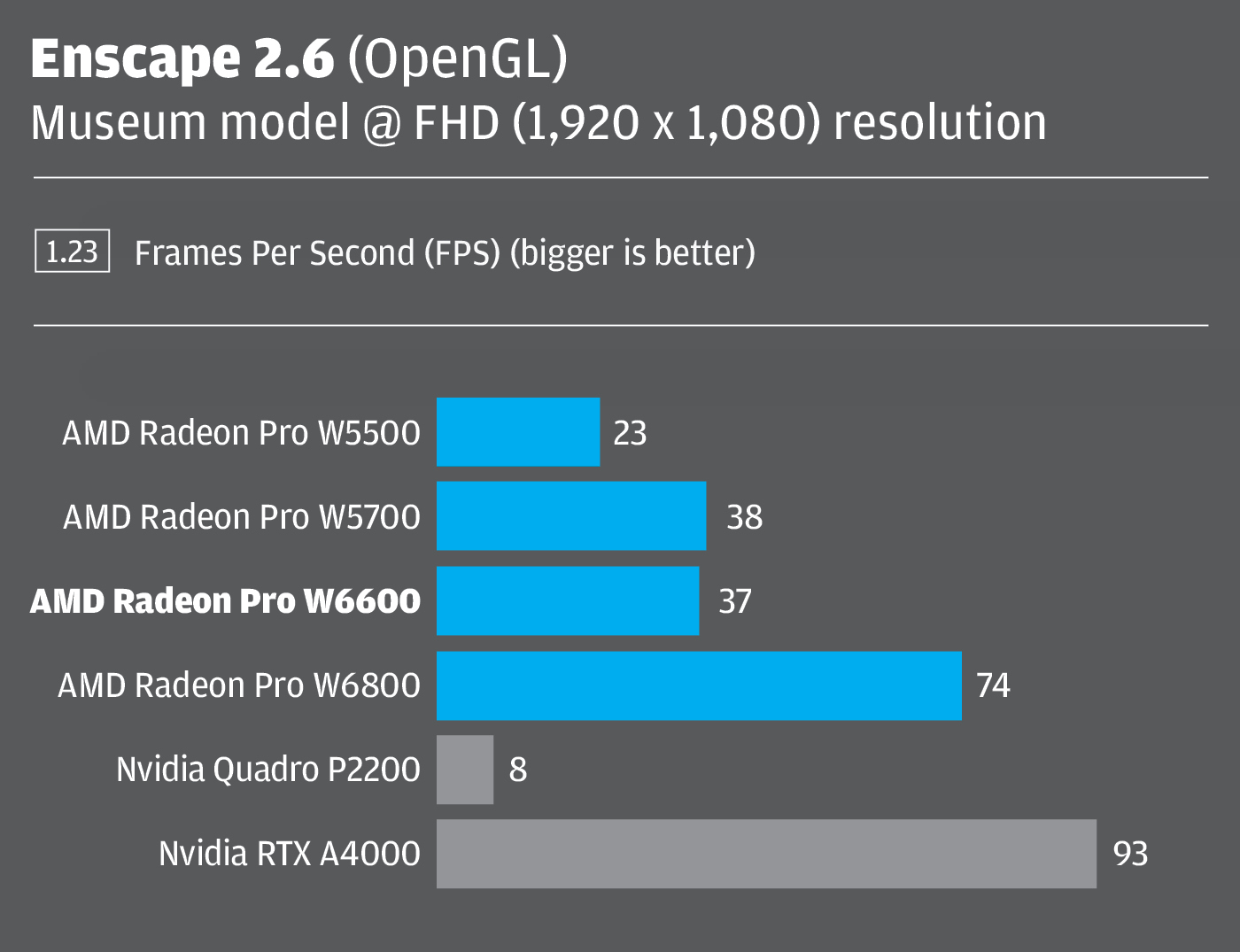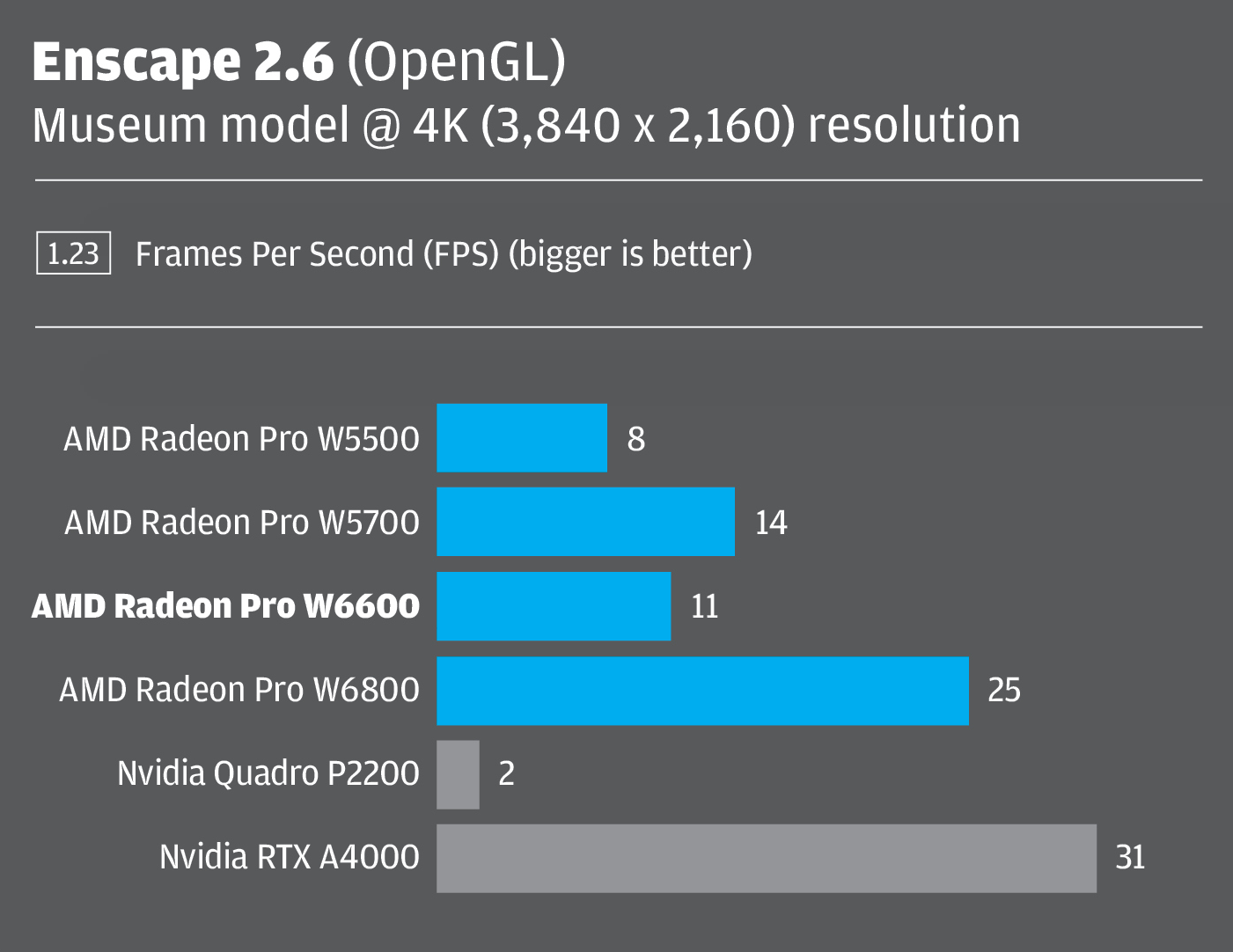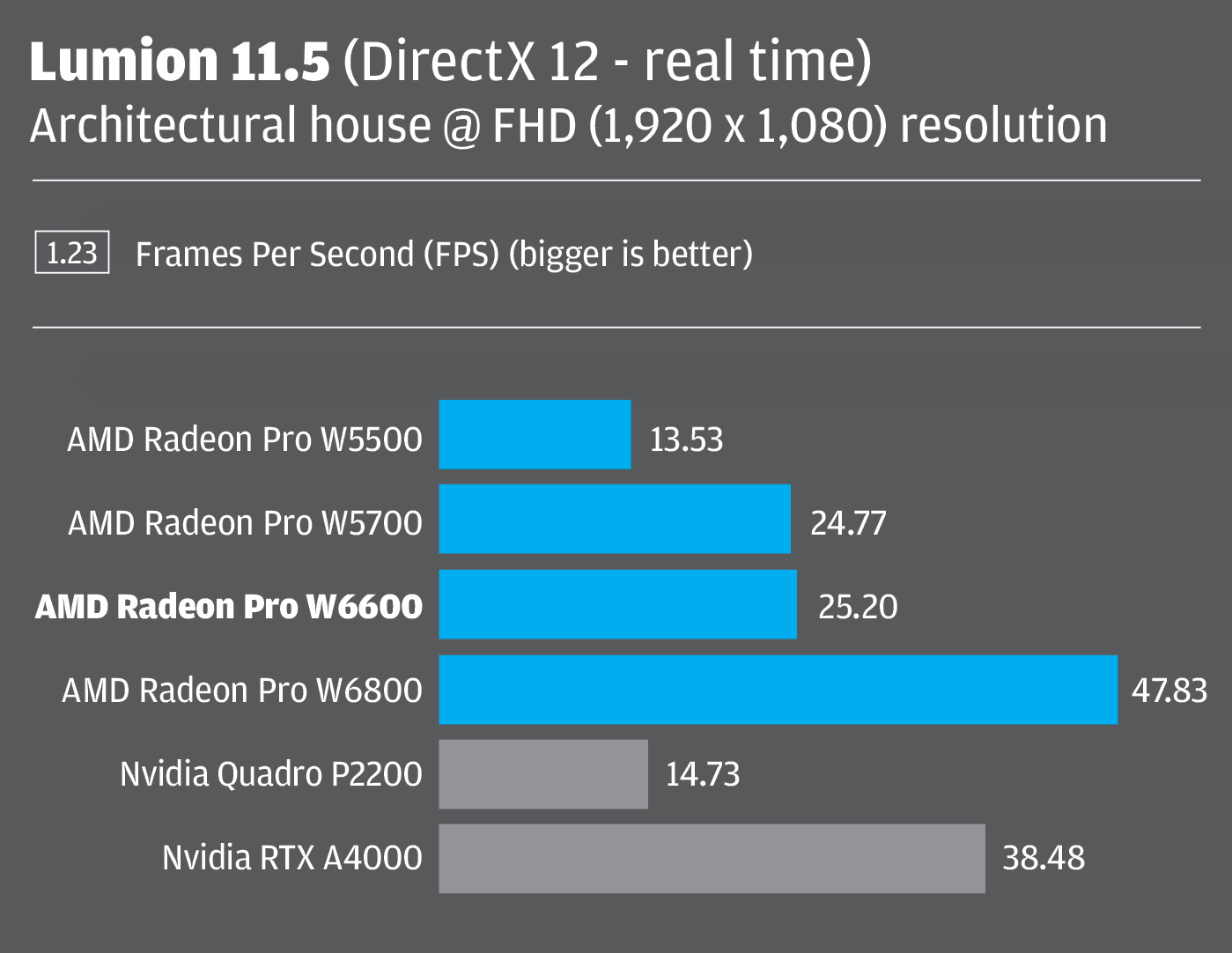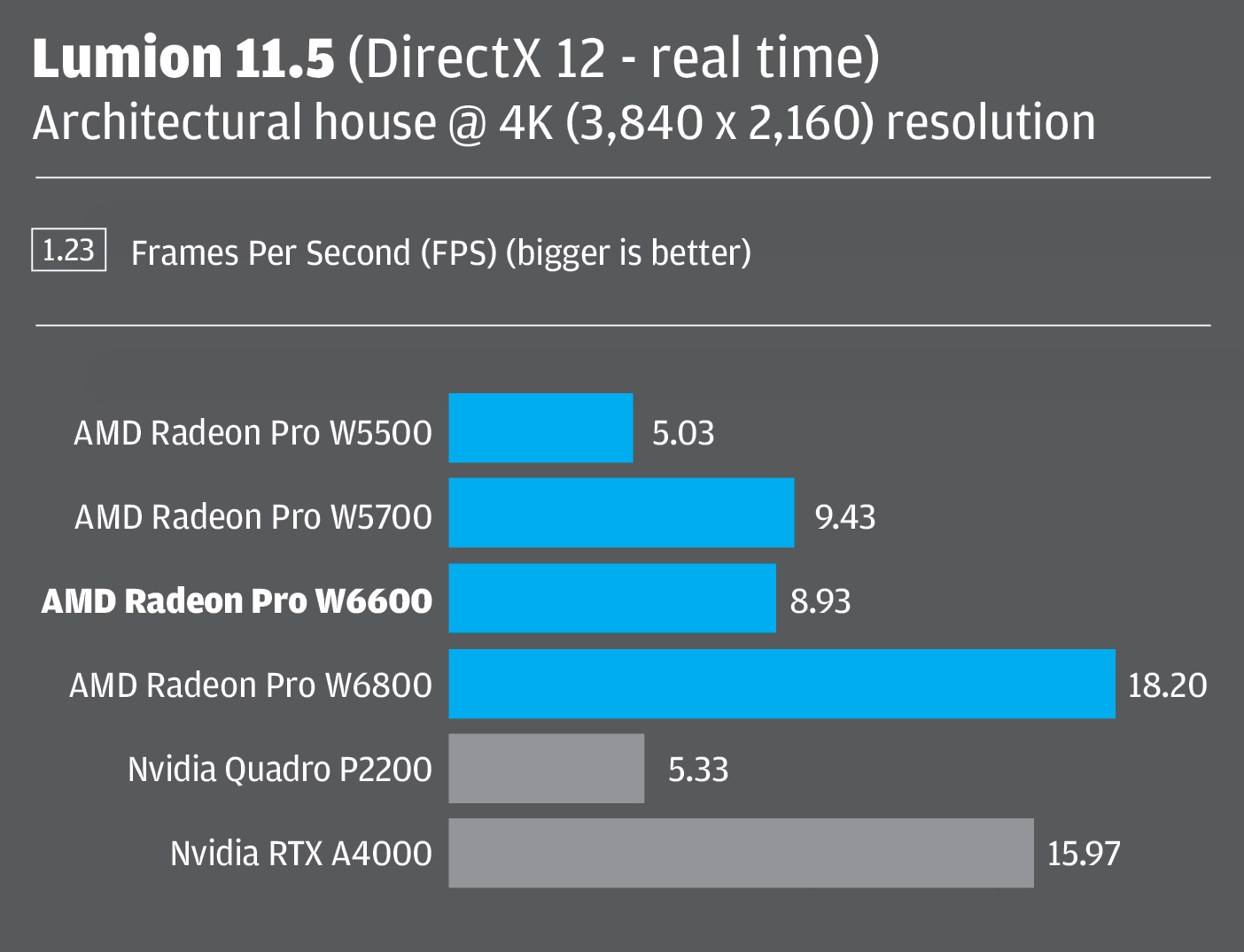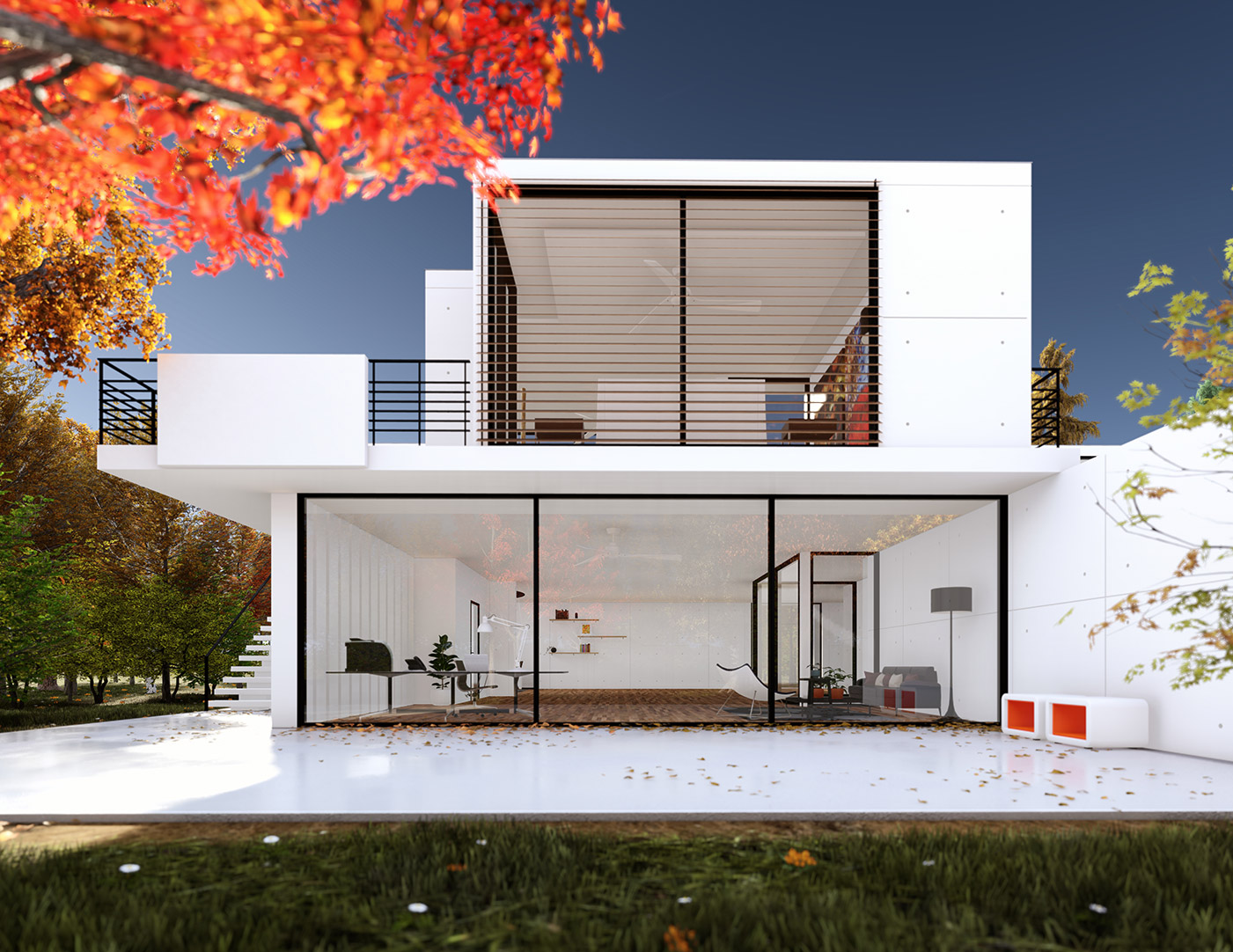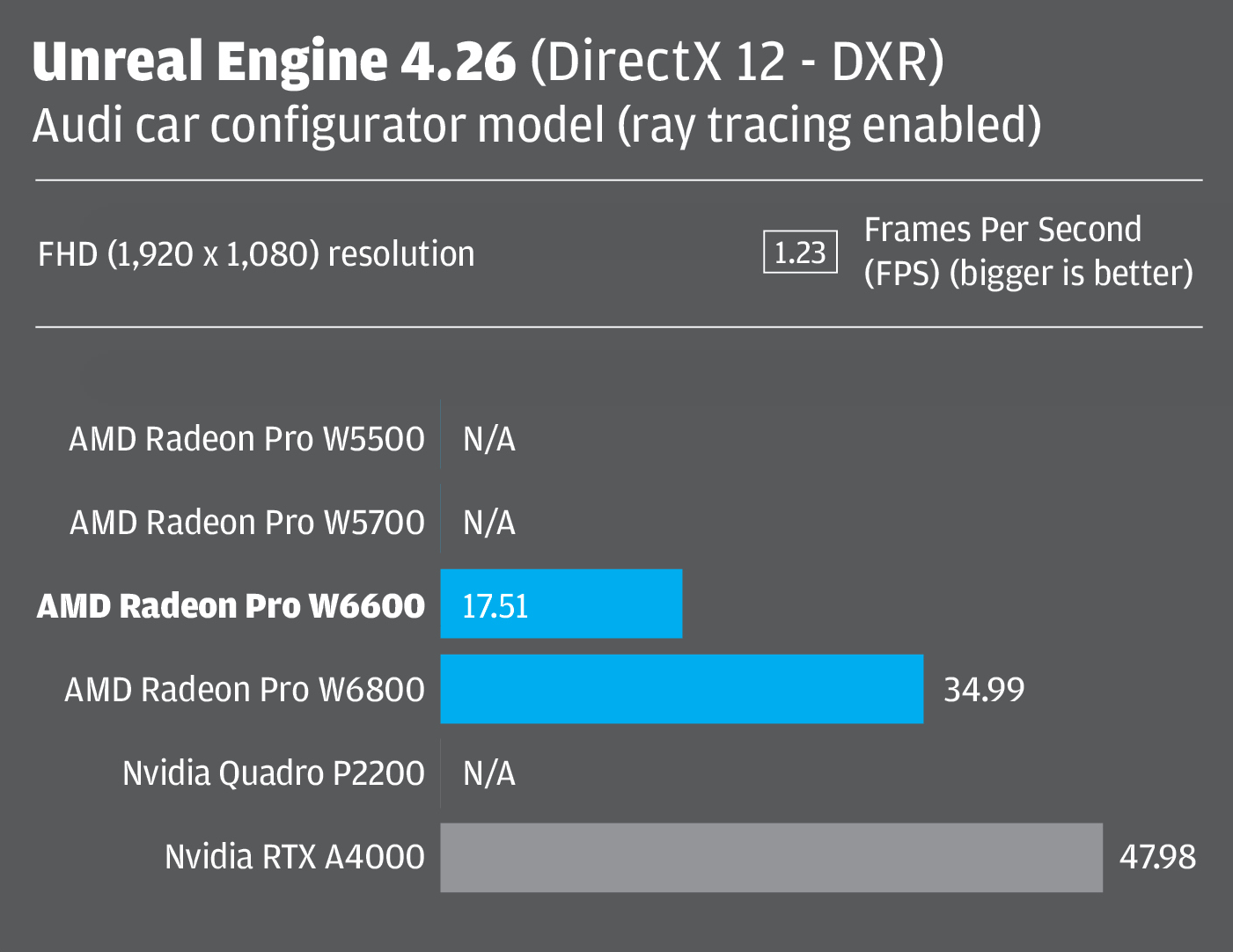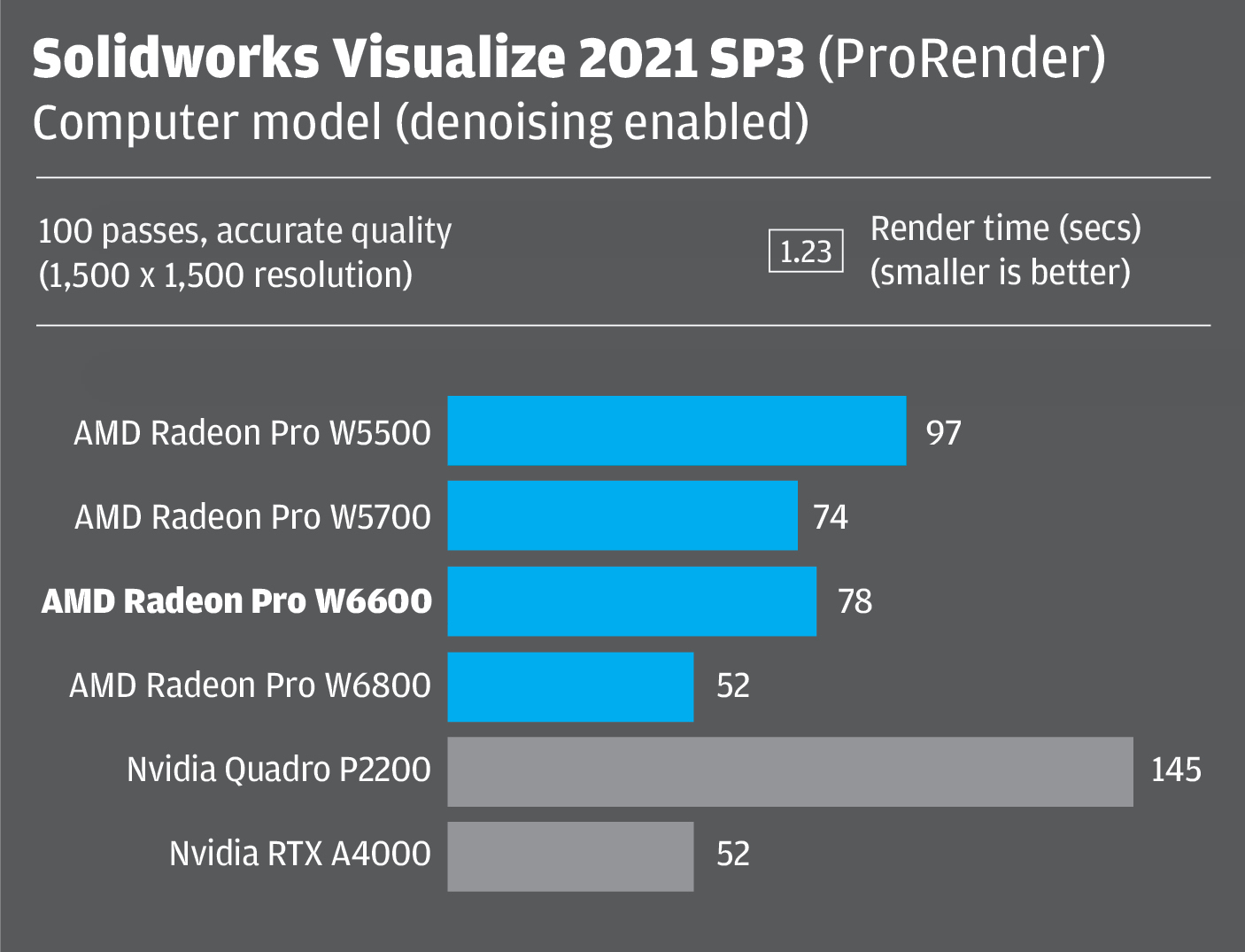The new $649 AMD Radeon Pro W6600 pro GPU offers users of CAD and BIM software a gateway into design viz and VR, now and in the future.
In recent years, architects have been expanding their software armouries. Design visualisation, reality modelling and virtual reality (VR) are increasingly being used to augment bread-and-butter CAD and BIM workflows.
The problem is that many architects don’t have workstation graphics hardware capable of effectively running these demanding software tools.
Most CAD and BIM software is CPU limited, shackled by the frequency of a single CPU core. So, if you only ever design buildings in Revit, Archicad, Vectorworks or similar, there’s little point in buying a high-end pro GPU. In such applications you’ll likely get the same 3D performance from a $200 pro graphics card as you would from one that costs ten times as much.
To cater to CAD users who want to embrace more demanding workflows, AMD recently launched the Radeon Pro W6600, one of two pro GPUs based on the company’s 7nm RDNA 2 architecture.
With 8 GB of GDDR6 memory and 10.4 Teraflops of Single Precision compute performance, the Radeon Pro W6600 is significantly less powerful than the AMD Radeon Pro W6800 (32 GB, 17.83 Teraflops). But it’s much more affordable. With an estimated street price of $649, it fits within a price bracket that architects are more likely to be comfortable with.
The AMD Radeon Pro W6600 is essentially a replacement for the Radeon Pro W5500 (8 GB, 5.35 TFLOPs), but it features enhanced Compute Units (CU) with dedicated ‘Ray Accelerators’ to provide an entry point for hardware-accelerated ray tracing.
In terms of specs, it’s a full height, single slot PCIe 4.0 board. It has a peak power of 100W, so is suitable for entry-level tower workstations, and needs a 6-pin connector to draw extra power from the PSU. With four DisplayPort outputs it can drive up to four displays at 4K resolution or up to two displays at 8K resolution. It’s supported by pro drivers and is certified (or in the process of being certified) for many of the leading professional applications.
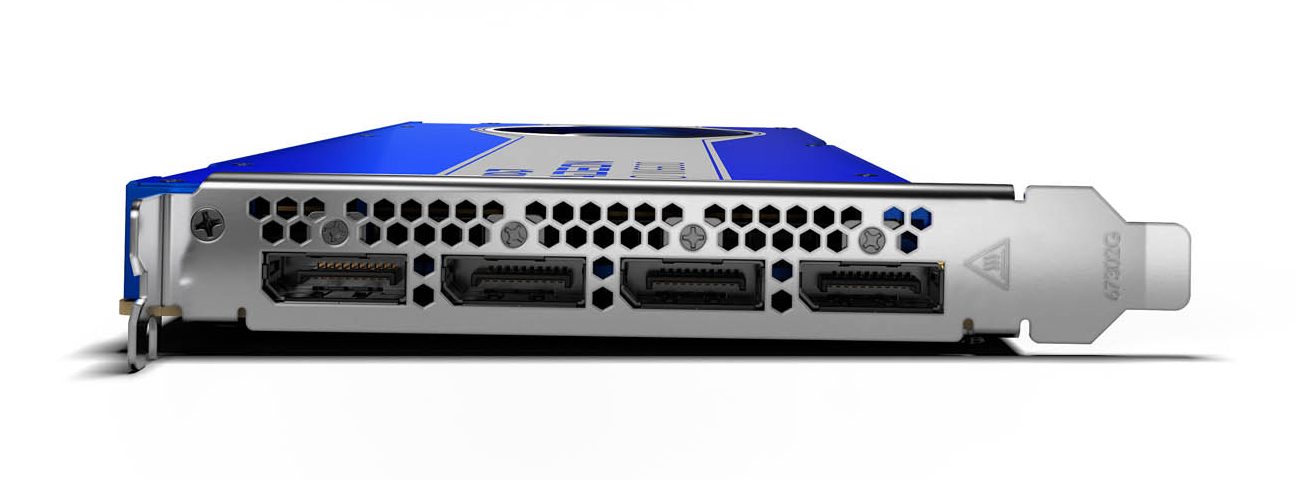
Hardware ray tracing
The AMD Radeon Pro W6600 and the W6800 are AMD’s first pro GPUs to feature hardware-accelerated ray tracing. The dedicated ‘Ray Accelerators’ can either be used to bring ray tracing effects to real time applications like Unreal Engine or accelerate traditional photorealistic ray-trace renderers to produce stills and animations faster.
As AMD’s ‘Ray Accelerators’ are so new there aren’t that many applications that can currently take advantage, but this is changing.
The list includes applications that support DirectX Raytracing (DXR), such as Unreal Engine. Also, any that feature Radeon ProRender 2.0, the latest version of AMD’s physically-based rendering engine. This comprises Solidworks Visualize, Acca Software, Autodesk Inventor, Rhino, Autodesk Maya, and Blender.
Looking to the future, it will also extend to any application that supports Vulkan Ray tracing, including those in development at Solidworks (Project Romulan), Autodesk (One Graphics System) and Enscape.
The Radeon Pro W6600 will not accelerate ray tracing in Nvidia RTX-enabled applications such as Luxion KeyShot, Chaos V-Ray, Chaos Vantage, Enscape 3.0 and others.
Of course, the Radeon Pro W6600 can also be used for many other applications that don’t rely on hardware ray tracing. This includes those that use the OpenGL or DirectX graphics APIs, which includes all CAD and BIM tools, real-time design viz software like Lumion or Twinmotion, GPU renderers that use OpenCL, as well as VR or photogrammetry software.
Radeon Pro Viewport Boost
The AMD Radeon Pro W6600 supports a new pro driver feature called Radeon Pro Viewport Boost, which is designed to reduce latency and boost viewport navigation performance.
The idea behind the technology is quite clever. It detects when a 3D model is moving quickly in the viewport then automatically drops the resolution to reduce the number of pixels the GPU needs to process. Then, as soon as that movement stops, it restores the full pixel count. According to AMD, this can increase Frames Per Second (FPS) dramatically without impacting the visual experience.
AMD Radeon Pro Viewport Boost currently works with Revit, 3ds Max, Twinmotion and Unreal Engine (for packaged projects only, not currently Unreal Engine Editor). Support for other applications is coming soon.
As one might expect, the technology works best in GPU limited applications, as we found in this in-depth review where we tested out the software with the Radeon Pro W6800. It also delivers the biggest benefits at higher resolutions (4K and above) and with larger models.
The Radeon Pro W6600 on test
We put the AMD Radeon Pro W6600 through a series of real-world application benchmarks, for GPU rendering, real-time visualisation and 3D CAD.
For comparison we used its more powerful sibling, the AMD Radeon Pro W6800 (32 GB), as well as the previous generation ‘RDNA’ AMD Radeon Pro W5500 (8 GB) and Radeon Pro W5700 (8 GB). We also tested the Nvidia RTX A4000 (16 GB), which includes Nvidia’s 2nd generation ray tracing (RT) cores and the CAD-focused Nvidia Quadro P2200 (5 GB), which will be replaced later this year by the Nvidia RTX A2000 (6 GB).
All tests were carried out using an Intel Xeon W-2125 workstation at FHD (1,920 x 1,080) and 4K (3,840 x 2,160) resolution using AMD’s enterprise 21.Q2 and Nvidia’s 471.68 graphics drivers.
The full spec can be seen below.
- Intel Xeon W-2125 (4.0GHz, 4.5GHz Turbo) (4 Cores) CPU
- 16 GB 2,666 MHz DDR4 ECC memory
- 512 GB M.2 NVMe SSD
- Windows 10 Pro for Workstation
CAD / BIM
As mentioned earlier, most CAD and BIM software is CPU limited. So, in some ways testing with a CPU limited tool like Autodesk Inventor is less about ranking GPUs by performance and more about showing that there is no tangible benefit to higher-end GPUs in many CAD workflows.
Results from the Inventor 2022 Invmark benchmark from Cadac Group and TFI ranked all GPUs closely together, with the higher-end cards only showing a small performance benefit.
Throughout the test, GPU utilisation on the Radeon Pro W6600 rarely rose above 40% and mostly hovered around 10-20%. We would expect similar results in Autodesk Revit, which shares the same core graphics engine.
At this stage it’s important to note that CAD applications are changing, with new graphics engines that use modern APIs like Vulkan to push more processing onto the GPU and reduce the CPU bottleneck. This includes future versions of Autodesk Inventor and Revit (and other Autodesk applications) which will use the new One Graphics System, and future versions of Solidworks (Project Romulan). And when these new developments come to fruition, you will likely get bigger benefits from higher-end GPUs.
This is already starting to be seen in mechanical CAD software Solidworks 2021, which features a more modern graphics engine built around OpenGL 4.5. The SPECapc for Solidworks 2021 benchmark showed a wider spread of results, and a clear benefit for the higher-end cards, especially the Nvidia RTX A4000.
However, it’s important to put this benchmark score in context. Even with our largest model, the colossal MaunaKea Spectroscopic Explorer telescope (8,000 components, 59M triangles), the Radeon Pro W6600 delivered 24.29 Frames per Second (FPS) in shaded with edges display mode at 4K resolution, more than enough for a fluid viewport experience.
Real time visualisation
Real-time viz is one of the major reasons for buying an AMD Radeon Pro W6600 over a more CAD-focused GPU like the Nvidia Quadro P2200, Nvidia T1000 or AMD Radeon Pro WX 4100.
In the multi-purpose 3D engine Unreal Engine and arch viz tools Enscape and Lumion, the Radeon Pro W6600 showed a clear lead over the Nvidia Quadro P2200, especially at 4K resolution.
However, at 4K the viewport wasn’t that smooth. We recorded 11 FPS in Enscape and 8.93 FPS in Lumion, which is below the recommended 20+ FPS. As a result, for larger models the GPU looks better suited to FHD (1,920 x 1,080) resolution. And those that take design viz seriously will probably want to look at the $1,000 Nvidia RTX A4000 (16 GB) or $2,250 AMD Radeon Pro W6800 (32 GB).
In saying that, the AMD Radeon Pro W6600 does have a trick up its sleeve in the form of AMD Radeon Viewport Boost (see earlier). In Unreal Engine, testing with this Paris interior scene from arch viz artist Benoit Derau, we saw frame rates rise from 34 FPS at 4K to a whopping 88 FPS with Viewport Boost set to max. You won’t get this degree of boost with all datasets, and AMD still needs to expand the number of applications that Viewport Boost supports, but dynamically reducing the resolution when models are in fast motion could certainly help users get that 4K visual experience without taking a performance hit.
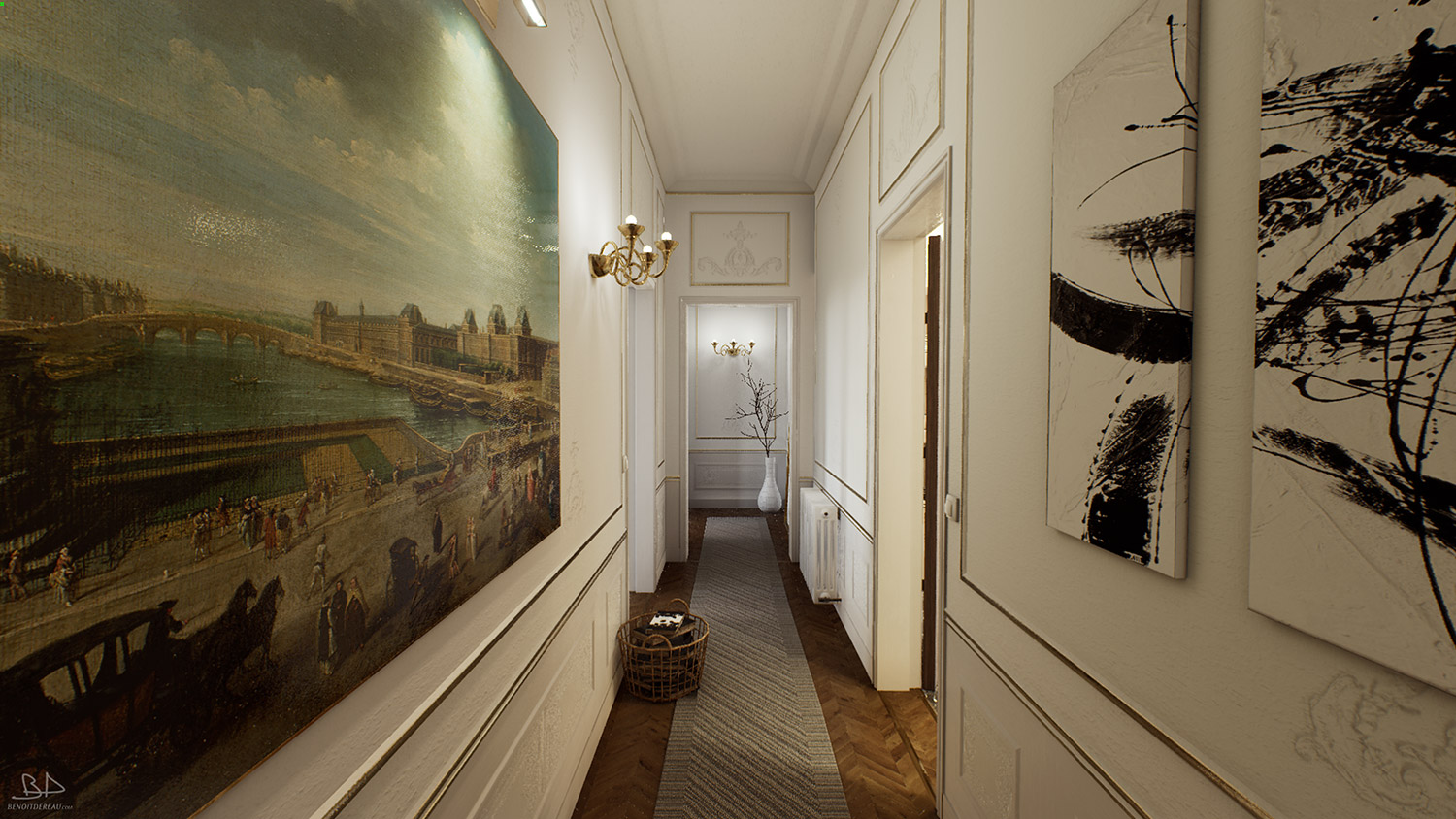
You can read more about AMD Radeon Pro Viewport Boost in this in-depth review.
Beyond pure processing power, it is important to talk about GPU memory. One of the potential reasons that the AMD Radeon Pro W6600 massively outperforms the Quadro P2200 in Enscape at 4K resolution is because it has more memory (8 GB vs 5 GB).
Our museum test model ideally needs more than 8 GB to view at 4K, so this might explain why the Quadro P2200 virtually ground to a halt at 2 FPS, as it has effectively share GPU memory with system memory (RAM). Of course, not all viz arch models are this demanding, but it highlights the fact that GPU memory is an important consideration for design viz, much more so than pure CAD or BIM, which rarely needs more than 3 GB or 4 GB of GPU memory, even for huge models.
Hardware ray tracing
One of the key features of the AMD Radeon Pro W6600 is that is has hardware ray tracing built in. To test this out we used Unreal Engine’s Audi A5 convertible Automotive Configurator with DirectX Ray tracing (DXR) enabled.
Real time ray tracing at 4K resolution is really the preserve of super high-end GPUs so we focused on FHD resolution instead. Surprisingly the Radeon Pro W6600 was still able to deliver 17.51 FPS. While this isn’t super smooth, it’s usable, but dwarfed by the AMD Radeon Pro W6800 and Nvidia RTX A4000. The Nvidia Quadro P2200, AMD Radeon Pro W5500 and Radeon Pro W5700 don’t get a look in here as they don’t support hardware ray tracing.
In reality, when it comes to ray tracing the Radeon Pro W6600 is probably better suited to applications like Solidworks Visualize which use Radeon ProRender to render out highest quality stills and animations. Our tests showed it to be streets ahead of the Nvidia Quadro P2200 but significantly behind the Nvidia RTX A4000 and AMD Radeon Pro W6800, with and without denoising enabled (N.B. Denoising is a post-processing technique that filters out noise from unfinished / noisy images to help deliver better looking renders with significantly fewer rendering passes).
Memory is also important for GPU rendering. When rendering in Solidworks Visualize with no other applications open, a 5,500-component industrial machinery Solidworks model used just over 6 GB of GPU memory. Meanwhile, a 2,000-component bike model needs just over 8 GB and the 8,000-component MaunaKea Spectroscopic Explorer telescope model needs even more.
The verdict
At $649, the AMD Radeon Pro W6600 represents excellent value for a certified pro GPU for CAD and BIM software that can also handle design viz and VR workflows.
In most tests it stands shoulder to shoulder with the Radeon Pro W5700, AMD’s previous generation flagship GPU, which is dual slot and consumes more than double the power. But the Radeon Pro W6600 is not only smaller, less power hungry and cheaper, it also has hardware ray tracing built in.
Pro applications that can take advantage of the W6600’s ‘Ray Accelerators’ might currently be a little thin on the ground, but designers and architects should look to the future before considering their next workstation GPU.
Thanks to developments at Solidworks (Project Romulan) and Autodesk (One Graphics System) it shouldn’t be too long before GPU hardware ray tracing can be used in the viewports of the CAD and BIM tools themselves. And the idea that ray tracing will become just another viewing mode, with users able to ‘instantly’ toggle between ‘shaded with edges’, ‘wireframe’, ‘realistic’ and ‘photorealistic ray trace’, is extremely compelling.
At the moment, the AMD Radeon Pro W6600 doesn’t have any real competition at its $649 price point. The Nvidia RTX A4000 costs $350 more and while the Nvidia Quadro P2200 is cheaper it’s significantly slower and lacks hardware ray tracing.
That won’t be the case for too long, however. Later this year Nvidia will start to ship the Nvidia RTX A2000, which will bring pro GPU hardware ray tracing to the sub $500 price point.
The RTX A2000 consumes less power at peak (70W), offers broader software compatibility and fits Small Form Factor (SFF) workstations as well as standard towers. However, it comes with 6 GB of GPU memory, 2 GB less than the AMD Radeon Pro W6600. This could limit the size and complexity of the models users can work with comfortably, as we saw with the 5 GB Nvidia Quadro P2200. It will be very interesting to see how things stack up.




